There’s a little voice whispering into many a new rider’s head that maybe, just maybe, they should be riding a litre bike. And a key contender for literbikes has been a Suzuki GSX-R1000R for a long time.
Sometimes it’s not a whispering voice. It can also be the voice of friends (some friends they are!) telling you that you’ll get sick of — or grow out of — a 600 cc sport bike. It could be the glimmer of the painted fairings screaming at you. “Buy me! Buy me!”
Regardless, there’s something explicit or implicit telling many riders to make the usually irrational choice of hopping onto a bike with way too much power for everyday use, a very impractical riding position, and a drivetrain that’s designed only for smooth roads with high visibility.
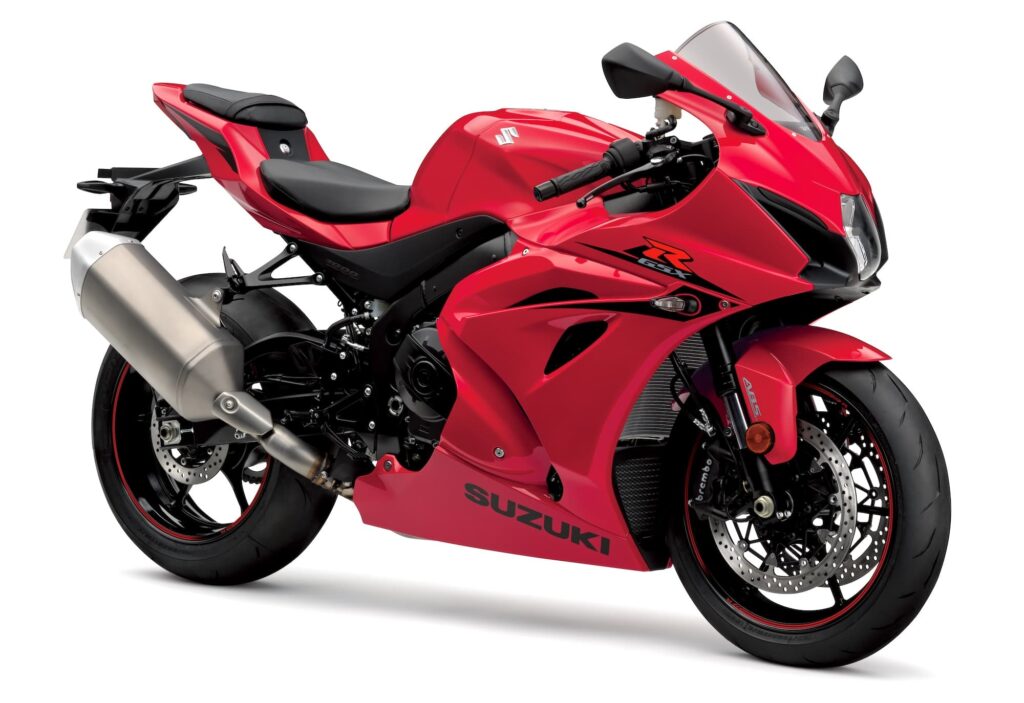
Whatever. Literbikes are awesome. And the Suzuki GSX-R1000 has a myth to it that few other brands have captured.
I have no business riding these 200-hp monsters, and yet I still had the pleasure for a brief period, after renting one through Riders Share (search for “Motoforall“) in sunny Greater LA. It wasn’t my first time on a literbike though, so I wanted to share my experiences of the Suzuki GSX-R1000R here.
I’ll go over
- Why Ride a Literbike? You silly goose, Dana
- A brief history of the GSX-R1000
- What’s special about the 2017+ Suzuki GSX-R1000R?
- Alternatives, if you’re in the market
- Reality of Ownership
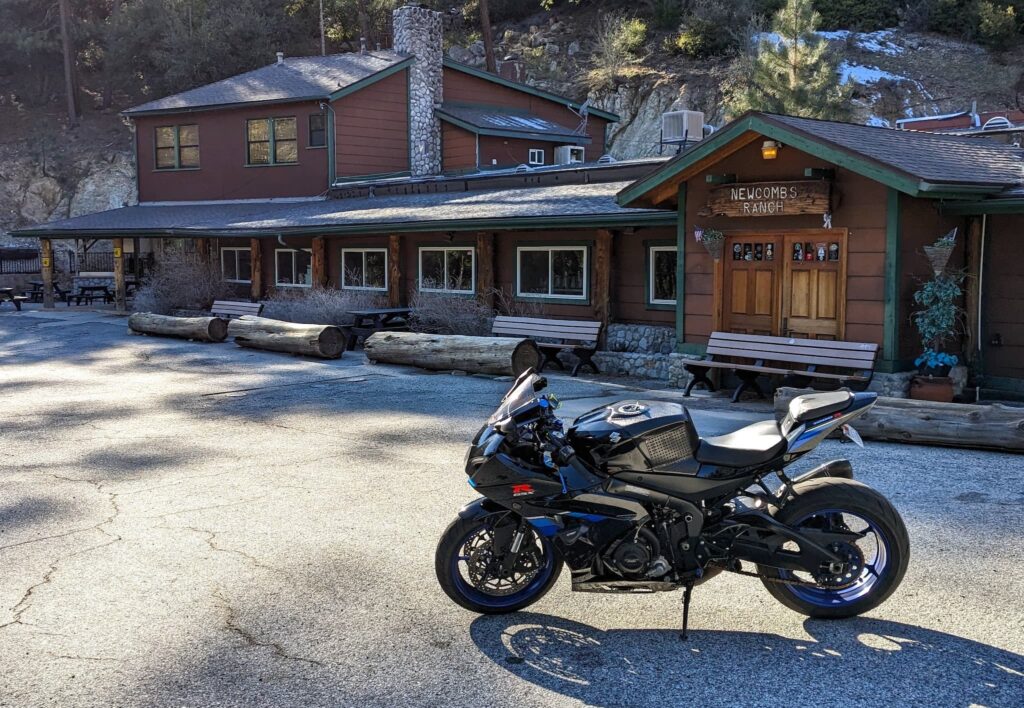
Are you obsessed with motorcycles?
Well, I am. That’s why I created this site — as an outlet. I love learning and sharing what others might find useful. If you like what you read here, and you’re a fraction as obsessed as I am, you might like to know when I’ve published more. (Check the latest for an idea of what you’ll see.)
Why Ride a Literbike?
The thing about arguing for why ride a literbike is that as a rider, you’ve probably heard more reasons why one shouldn’t ride a literbike.
- They’re uncomfortable.
- They’re highly strung.
- They have too much power up top, and not enough down low.
- They generally encourage bad behaviour.
- They get hot.
- They burn through fuel.
- They rarely (if ever) have luggage accommodations.
- The windscreen is for crouching behind, not keeping the wind off you while commuting.
- Four-cylinder motorcycles (most of them have fours) are “boring” (to some)
OK, we get it. You shouldn’t ride a literbike. But maybe you should.
… Wait, what even is a “literbike”? It’s an abused concept. It is not, for example, any bike that’s over 1000 cc or so. It’s not even “any sport bike” in that vicinity.
When I — or most people talking about bikes — say “literbike”, I really mean any motorcycle that’s intended for racing but with some mirrors and lights slapped on, and usually a lower-spec and lower-power engine than an actual race bike, to pass emissions, increase reliability, and reduce costs for the everyday consumer.
I use “literbike” as a moniker for “any ~1000cc high-performance, fairing-clad sport bike that prioritises performance over everything else, toning it down for road legality only.”
Or as Andy Greaser of Revzilla put it: “If it’s concerningly fast, something like 1,000 cc, and has an aggressive power-to-weight ratio relative to its peers, you’re looking at a literbike.” (Edited slightly for brevity.)
Examples of literbikes are things like our hero of this story, the Suzuki GSX-R1000 and its ancestors, the Yamaha YZF-R1, the Ducati Panigale, the Honda Fireblade, the BMW S 1000 RR, and so on.
But notably, I’m not talking about motorcycles like the Honda VTR1000F Firestorm, the Suzuki Hayabusa, or the Kawasaki Ninja 1000. These are great bikes that are much more sensible choices than literbikes for most people who aren’t going to buy a bike just to strip off the mirrors and lights and flog them around a nearby track.
But that’s my point. Who gets into motorcycling to be sensible? If I were sensible, I’d stick to my Toyota Camry, which I do sometimes if I’m very cold and tired, or just going shopping and need space in the trunk (or the “boot”, which sounds weird to me after being out of the country for so long…)
That’s reason #1 why you should give literbikes a go — they’re not sensible. They unleash your inner child. Getting a literbike is usually a silly thing to do.
It’s silly, but it’s awesome, and also a little bit difficult. Riding a middleweight’s torque curve is easy. Riding high-power adventure sport tourers can be almost clinical because they are a doddle to ride quickly. But superbikes, with their hunched-over riding positions and inaccessible powerbands, take effort, and that effort makes you focus and makes the result feel more rewarding.
And it IS rewarding being in second or third gear and feeling the torque come on. If you’ve ever driven a turbocharged car with more boost on it, it’s like that. Whoosh!
So if you think they’re cool to look at, and if the sound of them gives you the jollies… then indulge yourself and try a literbike. Worst case, you can sell it later to another young gun who wants to give literbikes a go.
Plus, it’s not like they’re bad to ride on the road — I’ll go over that below.
That’s really the long and short of it — get one if you want one. There’s more to this discussion later, and I’ll save it for another day.
A Brief History of the Suzuki GSX-R1000
The Suzuki GSX-R1000R is the most recent model in a long line of Suzuki GSX-R1000 sport bikes.
I always like to talk about the history of bikes to give some context and explain why they’re interesting and cool. This is what I’ll do here!
Suzuki released the first GSX-R1000 for the 2001 model year.
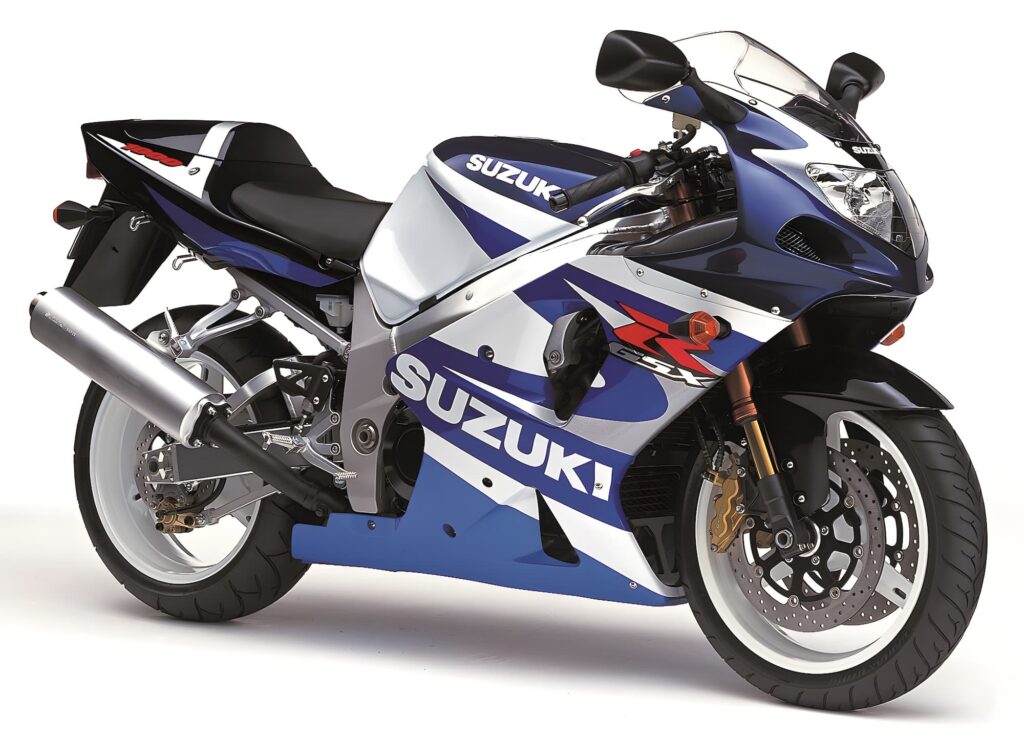
The first Suzuki 2001 GSX-R1000 was a huge step change from the liquid-cooled GSX-R1100 before it — lighter, more powerful, and more agile.
But it’s notable that it came nearly a decade after Honda first took a crack at the category with the CBR900RR, prioritising lightness over everything. And it’s several years after the first Yamaha YZF-R1 in 1998, which really brought the “literbike” category into maturity.
See here for a history of the Yamaha YZF-R1.
The K1-K4 GSX-R1000 models had a 988 cc inline four-cylinder fuel-injected engine. There’s a lot that’s right about them — inverted forks, strong brakes (only the 2001-2002 version had the six-piston callipers pictured above), lightweight at under 200kg / 440 lb (depending on who measured) — even though later models have eclipsed them significantly in most aspects.
Quick side note — in Suzuki speak, K0-K9 means 2000-2009, L0-L9 means 2010-2019, and M0 onwards means 2020 onwards. I suppose the 2030s will be the Ns, and so forth. So a K5 is 2005, an L7 is a 2017, and so on. This applies to all Suzuki motorcycles, but I see it most when people talk about sport bikes. Other brands don’t use this shorthand.
But the model that really captured the imagination of the public was the 2005 Suzuki GSX-R1000 — the mythical “K5 Gixxer”.
These days, the 2005-2006 GSX-R1000 is an iconic model, known for being the last generation before any electronic ride aids. It holds a similar status to the last-gen Tadao Baba FireBlade, the Honda CBR954RR.
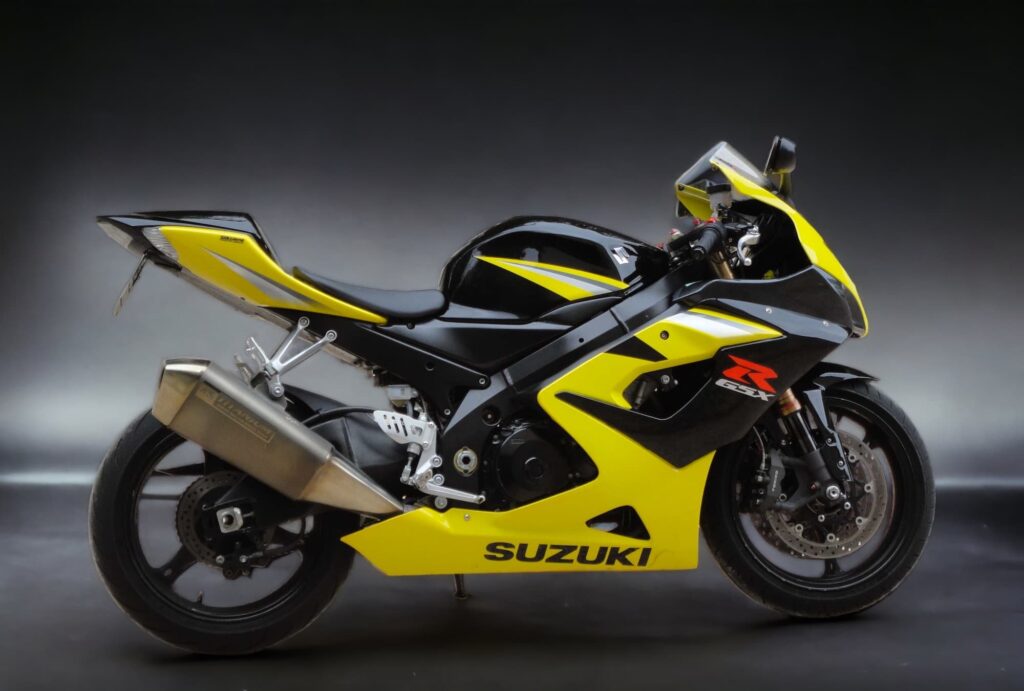
In fact, the 2005 Suzuki GSX-R1000 served as a template of sorts for BMW when they were designing the BMW S 1000 RR. After many decades of doing things differently and refusing to make outright sport bikes, BMW decided that if they were going to make one, they’d look to the best for inspiration. The rest is history.
See here for the history of the BMW S 1000 RR.
Later model Gixxers added electronics (starting with ride modes in 2007), shorter-stroke engines (meaning eventually more power, but higher up), and weight out the box. It wasn’t all up to Suzuki — emissions regulations dictated a lot of it, and some of it is reversible (e.g. heavy exhausts). None of them are bad bikes, to state the obvious.

But don’t get too upset at the increased oversquare ratio. The latest GSX-R1000 still has the longest-stroke engine compared to its peers (tied with the Honda, and effectively with the Kawasaki, when rounded).
Below is the bore and stroke — and the bore:stroke ratio — of the latest superbikes. Actually, let’s look at it visually first.

And here’s the raw data.
| Motorcycle (Latest gen) | Bore x Stroke | Bore/Stroke ratio |
|---|---|---|
| Suzuki GSX-R1000 (2017+) | 76.0 x 55.1 | 1.38 (Winner!) |
| Honda CBR1000RR (2008+ base, discontinued in some markets) | 76.0 x 55.1 | 1.38 (Tied) |
| Kawasaki ZX-10R | 76.0 x 55.0 | 1.38 (Nearly tied) |
| Ducati Panigale V4 (same since 2018 launch) | 81.0 x 53.5 | 1.51 |
| Aprilia RSV4 1100 (2019+) | 81.0 x 52.3 | 1.55 |
| Yamaha YZF-R1 (since 2015) | 79.0 x 50.9 | 1.55 |
| BMW S 1000 RR (same since 2009 launch) | 80.0 x 49.7 | 1.61 |
| Honda CBR1000RR-R (higher-spec) | 81.0 x 48.5 | 1.67 |
Bore and stroke ratio isn’t everything, but it’s still interesting to see Suzuki staying at the “long stroke” end of engines, even in their higher-spec, higher-power R model.
In fact, Suzuki is still preserving the 2005 GSX-R1000’s engine format. In 2016, Suzuki released the GSX-S1000F, a sport-touring motorcycle with an engine based on the K5 GSX-R1000. Hallelujah!
The revamped K5 engine in the GSX-S1000 line is tuned for low-range torque without losing too much top end. So if you’re after an old-school sport bike experience, there’s still that option. Plus, you get a lot more comfort. Heck, from 2022, you get cruise control in the Suzuki GSX-S1000GT.
Aside from inside Suzuki, It’s also important to consider what else was happening in the sport bike world in this period. It wasn’t exactly at a standstill.
BMW stole the show with the S 1000 RR in 2009, and even though it never became a racing success, it’s still a popular model on several fronts — power, tech, and comfort (heated grips as standard, yes please!). Ducati released the first Panigale, the 1199 Panigale, for 2011. Yamaha made a lot of noise with its crossplane crankshaft engine in the YZF-R1. And Kawasaki won a stack of races.
And BMW, Ducati, and Kawasaki have taken turns or caught up on having the most tech on a bike, being early with things like cornering ABS and active electronic suspension.
But Suzuki has been behind on the tech front. Suzuki released the most recent GSX-R1000 in 2017. Even these latest models don’t have active electronic suspension, though they received an IMU — but it only provides cornering ABS in the R model. There’s no cruise control. And no heated grips. (I know, people will heckle me for talking about cruise and heated grips… but if you’re going to be a one-bike guy and it ever gets cold, they’re nice, and with almost no weight penalty.)
So yes, the world moved on. Cycle World put it pithily: “The last time Suzuki paid any attention to its GSX-R1000 was in 2012, and the last major update was in 2009. You could have bought $5 worth of Bitcoin that same year and since made enough money to buy one GSX-R1000R for every track day you plan to do in 2017. Things happen in 8 years…” (Thanks, Cycle World, for reminding me that I should have bought Bitcoin…)
Suzuki made many under-the-hood changes to the 2017 GSX-R1000. In the engine, Suzuki moved to a VVT setup — a purely mechanical design used in the MotoGP bikes. Suzuki also changed the valve train design from a bucket / tappets setup to a finger follower system. Combined with lighter-weight valves, Suzuki raised the rev ceiling from 13,500 to 14,500 rpm, helping with top-end power.
Also, notably, the latest GSX-R1000 and R are kind of heavy for the class. For your average street rider, like me, I wouldn’t notice unless I were looking for it. But they’re a solid 10 kilos / over 20 lbs heavier than the higher-end — and much pricier — competition.
So, why would you still pick the humble GSX-R1000? Well, there are a few reasons.
Firstly, for street riders, it’s a fast bike. I don’t need to justify it. Just under 200 bhp, just over 200 kg… you can’t go wrong. The chassis and suspension package works excellently. Get it dialled in and you’ll like it even more, I’m sure (I didn’t have that opportunity).
Secondly, the Suzuki GSX-R1000 still has a legacy that hasn’t been compromised. Even though other bikes have passed it by in some respects, the Gixxer holds its own.
Finally, the Gixxer is the cheapest one of the bunch. Here’s a table of the USD prices of the 2023 models of a range of high-end superbikes.
| Brand | Model | Price (USD, 2023, MSRP) |
|---|---|---|
| Ducati | Panigale V4 R | $44,995 |
| Ducati | Panigale V4 SP2 | $39,500 |
| BMW | BMW M 1000 RR | $32,995 |
| Ducati | Panigale V4 S | $37,995 |
| Ducati | Panigale V4 | $35,995 |
| Honda | CBR1000RR-R Fireblade SP | $28,900 |
| BMW | BMW S 1000 RR | $30,995 |
| Honda | CBR1000RR | $26,995 |
| Yamaha | YZF-R1M | $26,999 |
| Aprilia | RSV4 Factory 1100 | $25,999 |
| Yamaha | YZF-R1 | $24,999 | Kawasaki | ZX-10R (ABS) | $18,799 |
| Suzuki | GSX-R1000R | $18,199 |
Yes, that spans the entire gamut of motorcycle prices. The price of the Suzuki GSX-R1000R is closely followed by the ZX-10R (ABS version), which are together then around 3/4 of the next one on the list. Cheapskates like me, rejoice! If you want to go fast on a budget, the Gixxer is your ticket, but the ZX-10R comes in very close.
(Thanks to the reader Richard who pointed out I forgot the ZX-10R, somehow.)
Basic Specs of the 2017 Suzuki GSX-R1000 and Suzuki GSX-R1000R
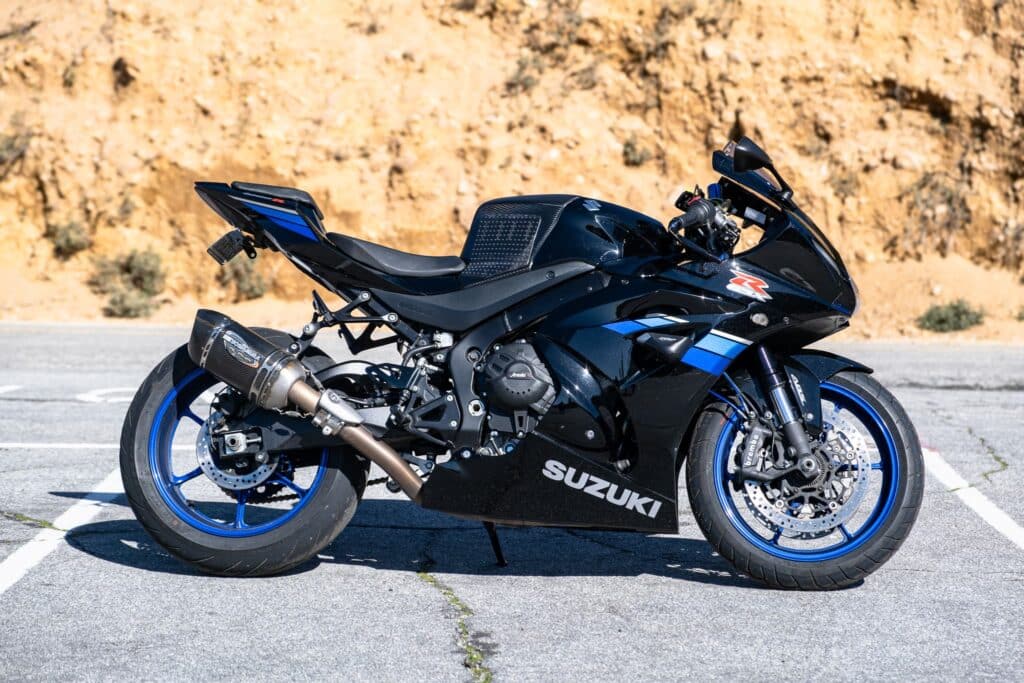
You can’t ride a spec sheet, but you can close your eyes and try to think of creative ways of describing these specs. Is it “nearly 1000 cc?” Is it “A shade over 200 PS, whatever a PS is, or annoyingly slightly less than 200 imperial horsepower”? Whatever.
| Part | 2017 GSX-R1000 specs |
|---|---|
| Engine capacity | 999.8 cc |
| Engine configuration | Inline four, DOHC |
| Fuelling | EFI |
| Bore / stroke (mm) | 76 x 55.1 mm |
| Compression ratio | 13.2:1 |
| Peak power (kW / bhp) @ rpm | 148.6 kW / 202 PS / 199 bhp at 13,200 rpm |
| Peak torque (Nm / ft-lb) @ rpm | 117.6 Nm / 86.7 lb-ft @ 10,800 rpm |
| Front suspension | Base model: Showa BPF R model: Showa BFF |
| Rear suspension | Base model: Showa shock R model: Showa Balance Free Light shock |
| Front brakes | 2 x 320 mm discs, Brembo M4-32 monoblock radial calipers |
| Wet weight | 203 kg (R model, ABS) |
| Front tyre size | 120/70-17 |
| Rear tyre size | 190/55-17 |
| Ride aids / electronics | Base model: Ride modes, ABS, cornering TC Base ABS model: Same + Cornering ABS R model: Same as ABS model +, quick shifter, launch control |
Suzuki GSX-R1000 vs GSX-R1000R differences
First, the colour schemes are different. The R colours are a bit more “premium”. Below are the launch colours, plus a couple more released in later years. I really like the “Phantom Black”. Yow! I don’t know, Suzuki consistently does it for me with paint on their premium bikes.
Colours aside, looking over the press stuff, it was a little confusing trying to understand the differences between the GSX-R1000 and GSX-R1000R, mostly because the difference is so slight. It’s not like other brands where the up-spec model gets you very fancy things like active suspension or a chassis made of solid vibranium.
The most confusing thing is the ride aids. While the base model 2017+ Suzuki GSX-R1000 doesn’t have cornering ABS, the base model with optional ABS does have cornering ABS. The non-ABS base model wasn’t available everywhere, though. And it’s not a popular option; anecdotally, people who would consider ABS as an option would rather just have another motorcycle (or a Camry! Go, Camry, go) as their everyday vehicle.
The up-spec GSX-R1000R, though, does come with cornering ABS, and doesn’t have a non-ABS option.
| Item | GSX-R1000 | GSX-R1000R |
|---|---|---|
| Ride aids | RbW, TC, Drive modes, IMU with cornering TC but no cornering ABS Optional ABS base model has cornering ABS | <– + Quick shift, launch control, cornering ABS No non-ABS R option |
| Front suspension | Showa Big Piston fork | Showa Balance Free fork, lightweight triple clamp |
| Rear suspension | Showa rear shock, fully adjustable | Showa Balance Free Cushion Lite shock |
| Colour schemes at launch | Metallic Triton Blue, Pearl Mira Red, Metallic Matt Black | Metallic Triton Blue, Glass Sparkle Black |
Aside from the ABS question, standard quick shifter, and launch control, the main difference between the base model and the R is in the suspension.
While the base model GSX-R1000 has great, fully-adjustable suspension, the R model has the next level up of “Balance Free” suspension.
Showa BFFs (seriously, BFFs, it’s what they call it! 💕) is an evolution of inverted fork design, designed to be more precise than valve stacks in most other forks.
Balance Free forks are designed to equalise (“balance”) oil pressure above and below the piston.
Regular forks are damped, either in the compression or rebound stroke, by fork oil that’s usually forced through a small gap. But this can create a pressure difference that affects fork damping at different points in the stroke. Showa aims to reduce this effect by reducing escape routes for the oil to equalise the pressure.
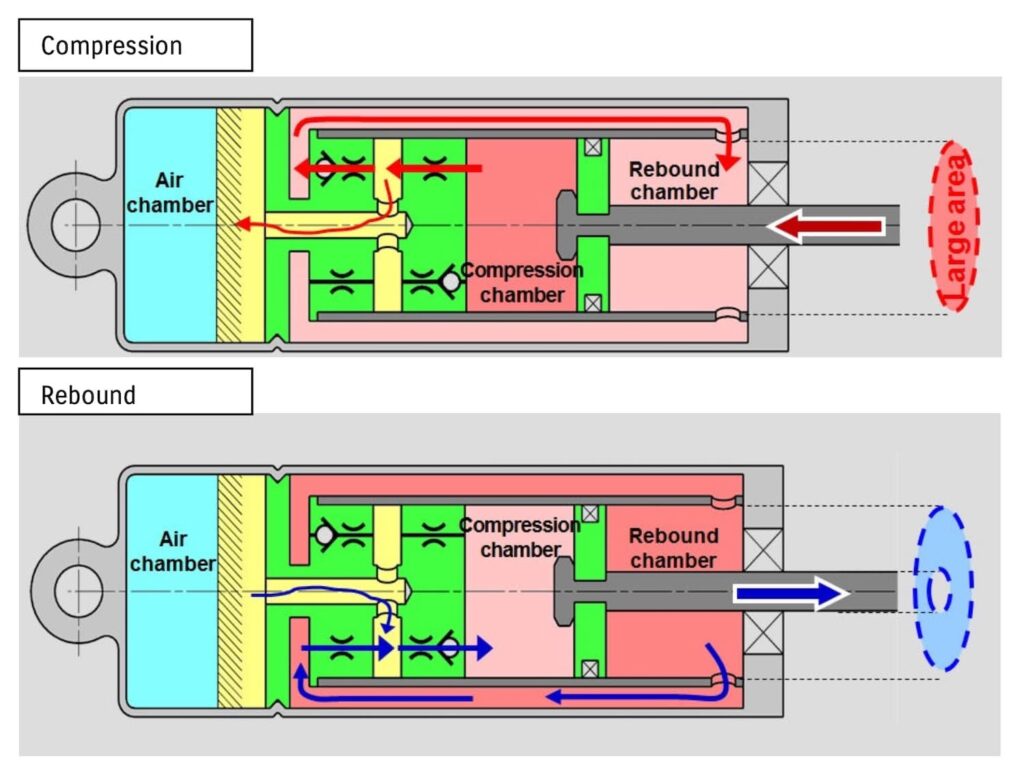
So how well do BFFs work in reality? Well, they didn’t let me down, so maybe they earned their name as my “Best Balance Free Fork Forever”. I haven’t done a back-to-back, so I can’t say. But I found them comfortable enough, and other riders say that they’re more comfortable than regular Showa suspension. Personally, I would save the money — I’d get the R model only for the ABS (or I’d get an ABS-equipped base model), but then, the R isn’t expensive and the colour scheme looks cool.
Riding the Suzuki GSX-R1000R
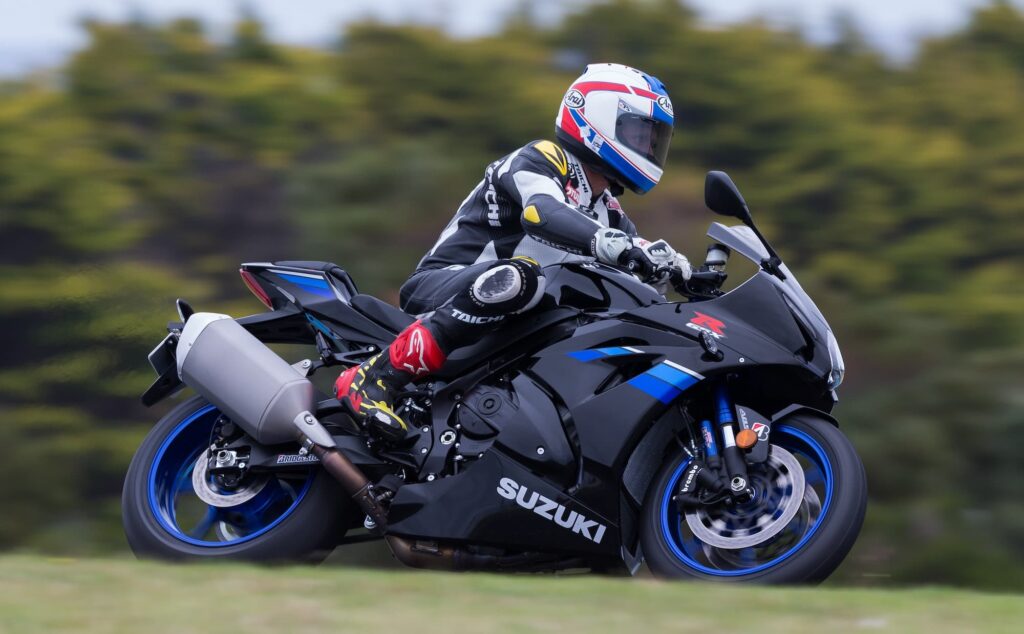
Starting riding the Suzuki GSX-R1000R had one pleasant surprise — a key. It looked just like my Hayabusa’s key. Win!
One of the things I like about Suzuki motorcycles is that they just fit me. I’m 5’11-6’0 (depending on the time of day) with a 32-inch inseam, and I sit snugly into them. (And my mother’s maiden name is “Mum”, my cat’s name is “Mittens”, and I bank with… ok, moving on.) “Fit” is hard to describe, but I don’t have it with all bikes — but I do with Suzukis, which is why I like ’em. Try one yourself!
Even though this wasn’t my first high-powered bike, nor my first superbike, I had a bit of apprehensiveness. I was picking up the motorcycle at night time, in Los Angeles, in a busy part of town. LA can be a bit of a warzone.
Sure enough, at the first set of lights, anxiety got me and I stalled it at launch. But thanks to its low-rpm assist feature — which graces nearly every bike from the GSX-R1000 down to the humble SV650 — starting it again at the lights was a breeze.
That’s riding many modern superbikes in a nutshell. They’re less forgiving. You have to give them a bit more throttle, and the clutch friction point is narrower. But they have niceties to make them more accessible to humans.
Once I got going, I found the Suzuki GSX-R1000R very easy to ride in everyday conditions. Mirrors and turn signals are where they should be and work fine. On the highway, I found it could do 100 mph / 160 km/h with much more grace than other motorcycles I had ridden recently, thanks to the small fairing. (And yes, that’s fast for public roads, but it was keeping up with early Sunday morning traffic, and someone still overtook me from an inside lane. California, baby!)
Of course, the GSX-R1000R can do much more than low triple digits, but there’s a time and place for that, and this wasn’t it.
Comfort on the Suzuki GSX-R1000R is still apparent at low-speed commuting. Clip-on bars are never ideal for navigating low-speed situations like parking lots, but they do fine. They’re not crazy low, nor “VFR800” high.
Since I was riding the GSX-R1000R around Los Angeles streets and hills, I got to experience a wide variety of road quality. There are tar snakes, cracks, and there’s gravel on the road out in the Los Angeles Forest. I never felt like the Gixxer was uncomfortable. I don’t have low standards, either!
I’ve definitely ridden much more uncomfortable bikes — my old Ducatis, and even early Hondas. Of course, they could have all done with a suspension refresh, but they weren’t high-mileage units, either.
Out in the hills of the Los Angeles Forest, I found that it was very easy to keep the Suzuki GSX-R1000R burbling between 25 and 75 mph in low gears, blasting out of corners before diving into the next one. I’m not from the area, nor the greatest rider in the world — I pull over to let aggressive supercars do their thin on their home turf (that way I get to eyeball them, too, wondering what that life must be like). But the big Gixxer lets you do anything. It’s a bike that makes me feel that obviously, I’m the limiting factor, not it!
Like I mention above in “Why ride a literbike”, it’s when you hit that torque curve in second and third gear that it all really makes sense.
Literbikes aren’t slow at low RPM. I used to read writers say they’re “gutless” low in the rev range. A worse adjective I can’t think of. It’s just that they’re docile low down, and ferocious up top. Chasing that top-end rush is what makes riding bikes like the Suzuki GSX-R1000R so much fun — and potentially, so dangerous.
The only bugbear is that because the GSX-R1000R’s torque does come on a little high in the rev range, you do feel like maybe you’re not getting the most out of it below 8000 rpm.
To get an idea of this, have a look at the below torque curve, which I cobbled together from a few data sets of dyno pulls on the L7 GSX-R1000. Bear in mind that no two dynos are alike; use this not for the top-end dyno numbers, but for the idea of the shape of the torque curve.
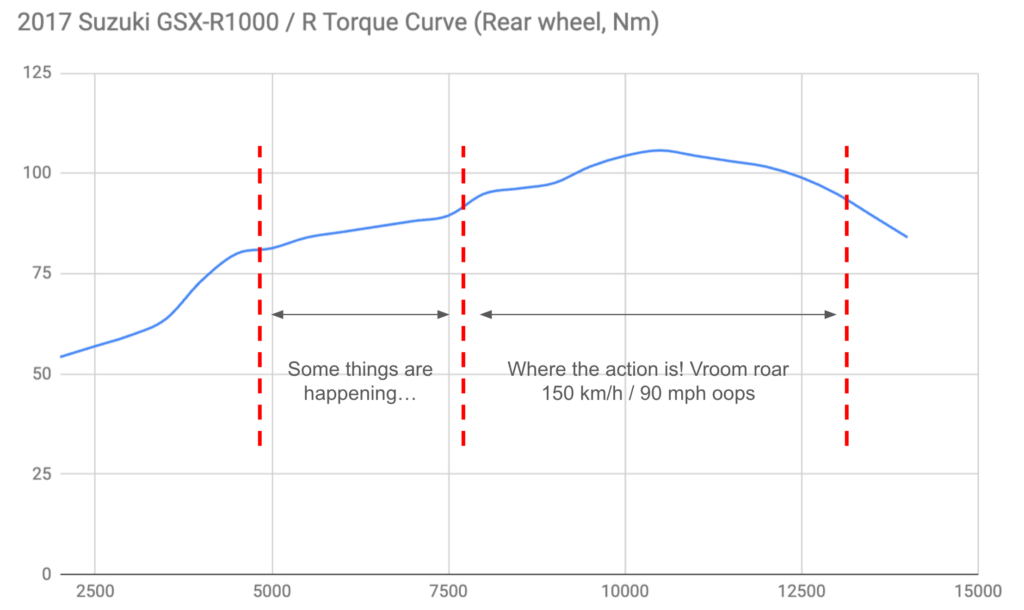
Yes, the GSX-R1000R does have lots of torque down low. Roughly 50Nm (about 37 lb-ft) is a plenty, even if the first gear is tall. It’s never slow. And keeping it between 5 and 8k isn’t tough.
It’s just that I only occasionally get it above 10k… and I wanted more of that. This is why 600cc sport bikes suit the places I ride more, and why I even prefer middleweight standards that just have torque everywhere (like a Triumph Street Triple RS I later took to the very same roads).
The gearing of the Suzuki GSX-R1000 / R out the gate is such that in first gear, if you rev it out, you’d hit around 150 km/h or 90 mph, shortly before hitting the redline. This isn’t unusual for literbikes.
| Gear | Speed at 5000 rpm | Speed at 10,000 rpm | Speed at 14,000 rpm |
|---|---|---|---|
| 1 | 54 km/h / 33 mph | 108 km/h / 67 mph | 151 km/h / 94 mph |
| 2 | 67 km/h / 42 mph | 135 km/h / 84 mph | 188 km/h / 117 mph |
| 3 | 81 km/h / 50 mph | 161 km/h / 100 mph | 226 km/h / 140 mph |
| 4 | 92 km/h / 57 mph | 184 km/h / 114 mph | 258 km/h / 160 mph |
| 5 | 102 km/h / 63 mph | 203 km/h / 126 mph | 284 km/h / 177 mph |
| 6 | 109 km/h / 68 mph | 218 km/h / 135 mph | 305 km/h / 189 mph (theoretical) |
In reality, of course, one does not wind out a literbike in first gear on the street (unless you’re doing a launch to above the speed limits, on a private closed course etc.). It’d be so twitchy and highly strung.
In the meat of the torque curve, the torque in first gear would make the front wheel loft into the air alarmingly easily. It’s much more sensible to be in second and third gears in twisty bits, fourth gear on longer fun roads, and fifth and sixth to save fuel on the highway.
This is where your preferences and where YOU ride comes in. If you’re spending your time riding curves and sweepers between 30 and 80 mph (50 and 130 km/h), as I often do when I’m having a fun day outside the city, you may feel like you’re not exploiting the liter engine’s potential.
But if you do enjoy finding those straits, giving the throttle a flick without even downshifting and getting a “whoomph!”, then the Gixxer may be more your cup of tea. It’s a good feeling.
Power aside though, the Suzuki GSX-R1000R isn’t the lightest motorcycle — it clocks in at over 200 kg / 440 lb. And the clip-on handlebars aren’t the ideal controllers for street-speed cornering. So it doesn’t give me the “invincible” feeling that a middleweight (and relatively lightweight) naked bike does.
There’s a trade-off, as usual. I get more speed on straights, but less agility in corners. This is still an awesome bike, so it’s awesome at both — just a different balance from a smaller, lighter-weight bike. Ultimately, I like the latter more, for my style of riding and the roads I frequent.
Some other stuff about everyday usability — the mirrors are fine, which means I didn’t notice them being terrible (looking at you, old Ducatis). The display is also adequate, though not a luxurious colourful masterpiece like you get on recent Ducatis or BMWs. I prefer dials, and if I have a display, I want it to be amazing, so that was a bit of a letdown. Anyway, I rarely look down at the display if I’m having a good time.
So, it’s not the perfect motorcycle. Why give the GSX-R1000R a go? One final reason: Because it might be the last in the line.
Suzuki hasn’t been investing heavily in the GSX-R1000 line since 2017. They’ve dropped it in Europe, as it doesn’t meet Euro 5 emissions, and they no longer compete in MotoGP. It’s a little sad, but the writing’s on the wall for this iconic line of motorcycles. If an update comes out… well, this gen will be even cheaper.
Alternatives to the Suzuki GSX-R1000R
Let’s be reasonable (for once). If you’re looking at a Suzuki GSX-R1000 / GSX-R1000R, then you’re probably not considering the high-end, more track-focused superbikes. You’re probably thinking of base model literbikes. So, let’s look at those.
Remember, all of these motorcycles are 30-50% more expensive than the Suzuki GSX-R1000R. So, arguably, none of them is a fair comparison!
Here’s a brief overview of some of the more popular contenders. Because all of these have a few things in common — a sportbike riding position, similarly high power-to-weight ratio (the difference isn’t significant for street riders), and inline four-cylinder engines — I’ll focus on what makes them unique and distinct.
BMW S 1000 RR
Firstly, the BMW S 1000 RR.
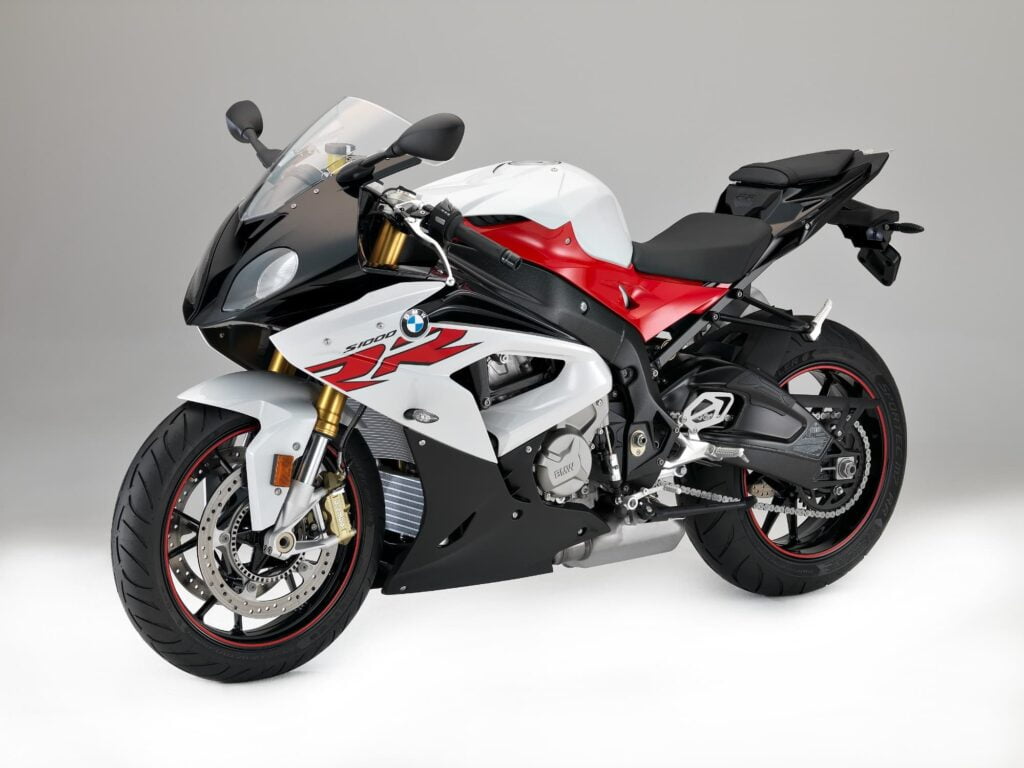
BMW has been making the S 1000 RR since 2009, and the first models were heavily inspired by the Suzuki GSX-R1000.
Before the S1KR, BMW was trying to do its own thing. It was making horizontal inline fours then big heavy sport tourer inline fours with funky suspension, and trying to make sport bikes with boxer twins. Eventually, they threw in the towel, and the world has been a better place since.
A few things that distinguish the BMW are the BMW brand, the asymmetrical front headlight look (until 2019, anyway), and the high level of comfort components — for years now they’ve come with standard cruise control and heated grips.
BMW has been making the S 1000 RR for long enough that older, used ones are usually in good condition (because BMW owners seem to be more fastidious) and reasonably priced.
See here for the full BMW S 1000 RR buyer’s guide to understand how each model changed in spec.
Ducati Panigale V4
Next, the Ducati Panigale, especially the Panigale V4.
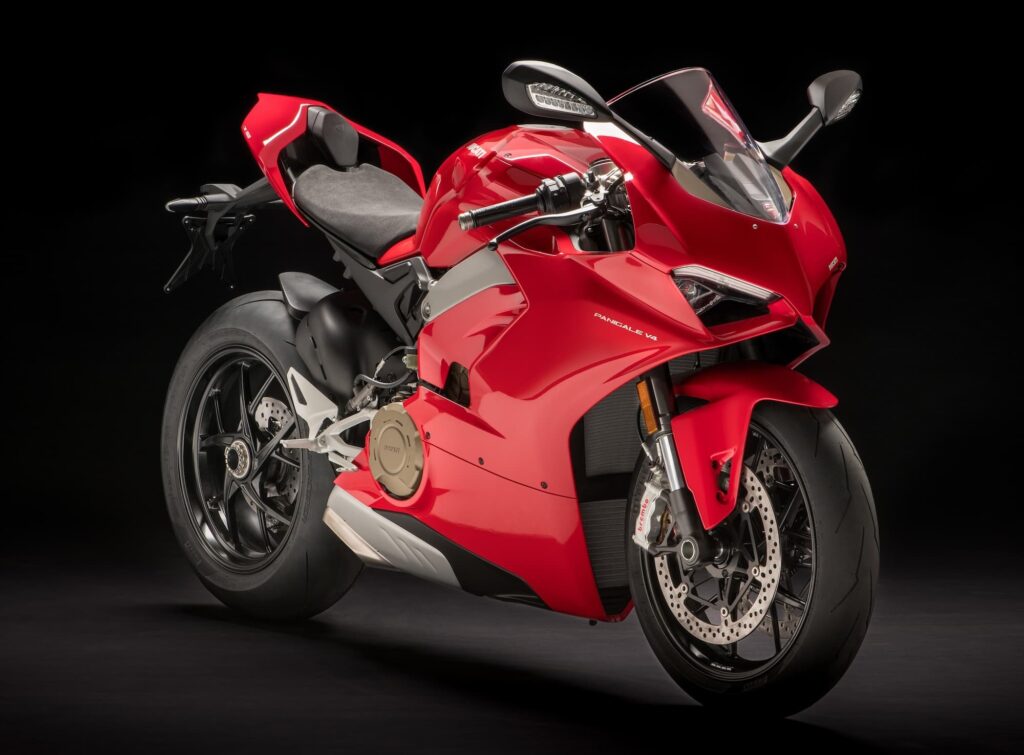
The Panigale is a line of motorcycles that started with the bike now known as the 1199 Panigale, first released in model year 2012. The earlier models were V-twins, or “L-twins” as Ducati calls them.
From 2012-2018 (with some overlap), the Panigale had the “Superquadro” V-twin engine, an engine name still used in the Panigale V2 in smaller capacity. (See the Ducati engine names guide.)
But since 2018, Ducati has had a 90-degree V-4 engine in the Ducati Panigale superbike line — the “Desmosedici Stradale”.
Ducati isn’t the only manufacturer to use a V4 in a superbike. Aprilia does, too, and has been doing so for longer. Norton does too, but for a very short period and to very few people!
But somehow, Ducati caught everyone’s attention with their V4, partly because they’re a bigger brand, and partly because they were so associated with V-twins until this point.
Other things that make the Panigale special are the striking looks (with the exposed rear wheel), high level of rider aids including cornering ABS (though no cruise / heated grips), and of course, Ducati brand cachet, if that’s important to you.
Honda CBR1000RR
Honda first released the CBR1000RR Fireblade (lowercase “b”) in 2004, replacing the FireBlade (capital “B”).
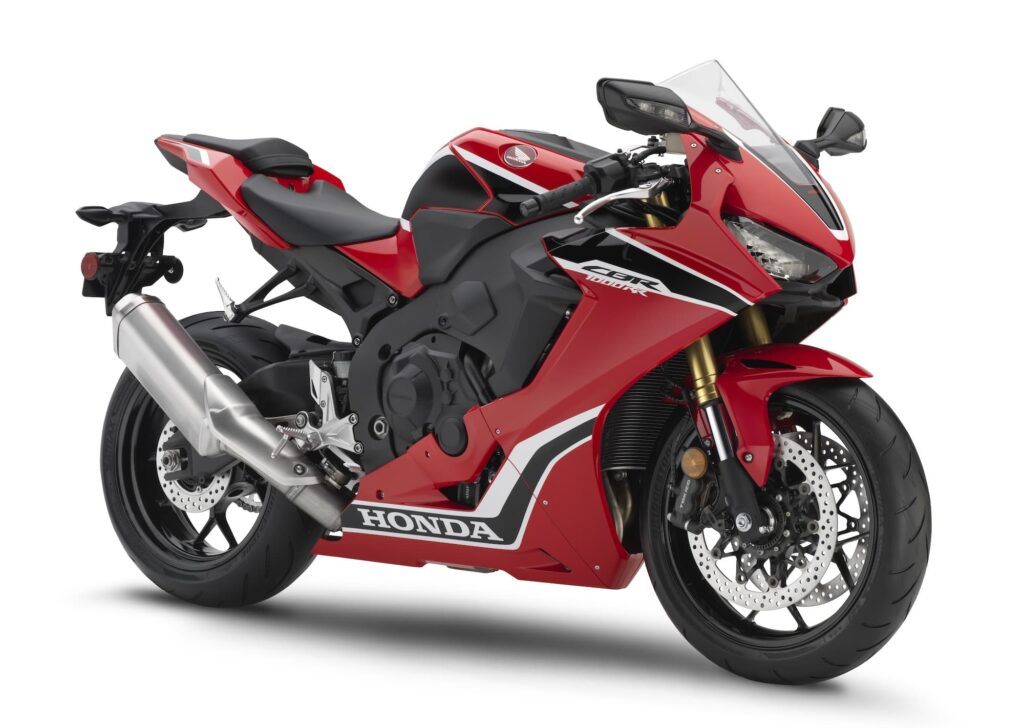
Before the 2004 model, Honda had always prided itself on making motorcycles that were equally usable on the street and track. But since then, Honda has made their Fireblade more and more track-focused, adding more and more letters to the end of it. As of writing, the latest is the CBR1000RR-R SP, often called the “triple R SP”. You can also pronounce it “Ciberrsp”, but do not.
But it makes more sense to compare the base model CBR1000RR, which isn’t obscenely expensive. It’s also not available in every market, e.g. Australia.
The base model Honda CBR1000RR has the same bore and stroke engine that it’s had since 2008. It’s longer stroke than the SP or RR-R models, and makes slightly less power — but again, not enough of a difference other than at full throttle down a long straight.
The base model still gets the 2017+ SP model’s updated chassis and electronics, including the IMU, ride modes, traction control, and a quick shifter. The suspension on the base RR is similar to the base model GSX-R1000 — Showa BPF and BFRC (not BFF / BF Lite like on the R). But the brakes are Tokico four-piston callipers, not Brembos.
Kawasaki Ninja ZX-10R
Kawasaki has been making the Ninja ZX-10R since 2004, replacing the ZX-9R, but it received a big slew of updates in 2016.
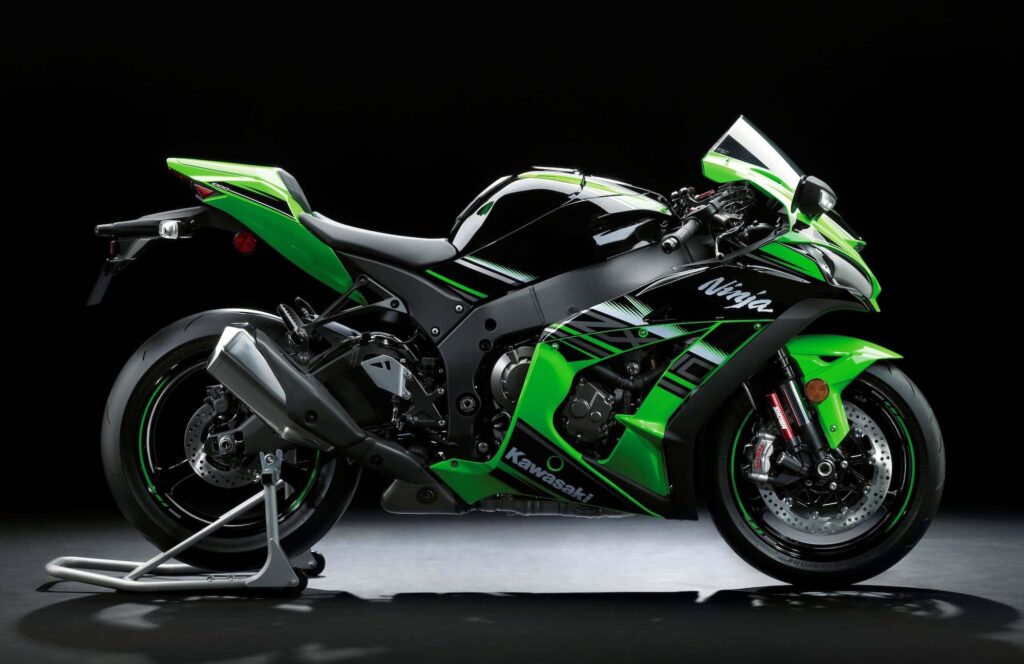
Amazingly, the basic format of the engine has remained intact since 2004 — same bore and stroke – though everything else has changed. The early ZX-10Rs didn’t race well or sell well, but that changed in 2013, when the Kawasaki Racing Team got wins in seven out of the 8 next years, most of them piloted by Jonathan Rea. So that has sealed the legacy of the ZX-10R (maybe as long as you’re Jonathan Rea).
Kawasaki has always been early on the tech front. So the ZX10R has had an IMU (for cornering ABS) since the 2016 model year, though it didn’t get cruise control until the 2021 model year, with heated grips becoming available as an option.
Yamaha YZF-R1
Finally, the Yamaha YZF-R1.
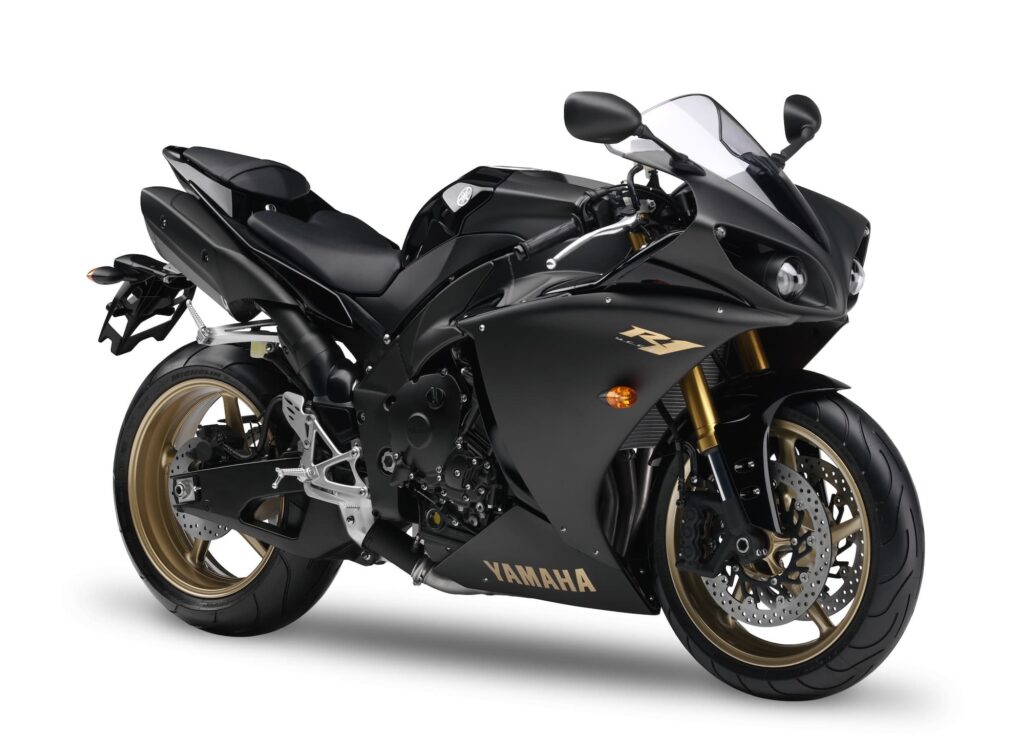
The Yamaha YZF-R1 has had many phases of gloriousness, but one of the more storied ones is the 2009-2014 period, when the crossplane crankshaft was introduced, but before the even shorter-stroke and higher-power 2015+ phase.
It’s the crossplane crankshaft that really distinguishes the Yamaha YZF-R1. The so-called CP4 motor has a different firing order and different firing angles from regular inline four-cylinder engines. The design is such that there’s always a piston in motion. It’s intended to produce better traction, and incidentally makes a glorious sound that some say is akin to that of a V4.
There’s plenty of other stuff that makes the R1 great, of course — it has a high spec level, loads of tech from 2015 onward, and it looks the bee’s knees. The R1M is a particularly coveted piece of kit, with its active suspension.
See here for the full Yamaha YZF-R1 buyer’s guide.
Others
There are of course other alternatives — the Aprilia RSV-R, the “middleweight” (but still very powerful) Ducati Panigale 959 / V2, or older bikes from these same series. The above is just an indication.
I think it’s also interesting to remember the GSX-S line. Boring as it may be to say so, it’s the right bike for the vast majority of people, including me. The only reason I’m not on one is because I don’t make rational choices!
Wrap up
I really enjoyed my day on the Suzuki GSX-R1000R, and I think I’d have equally enjoyed the base model GSX-R1000. Though I did really enjoy looking back on the thing when I was parked, plus the bragging rights of the R.
I like an underdog, and it’s ridiculous to think that the big Gixxer is an underdog. It just goes to show how lucky we are with the crop of bikes available.
Final words — If you want to get the literbike bug out of your system, then do it. The GSX-R1000 is as good a bike as any on which to do it.
If you think you’ll ever want to try it, then ride a sport bike while you can, because you won’t be able to forever.

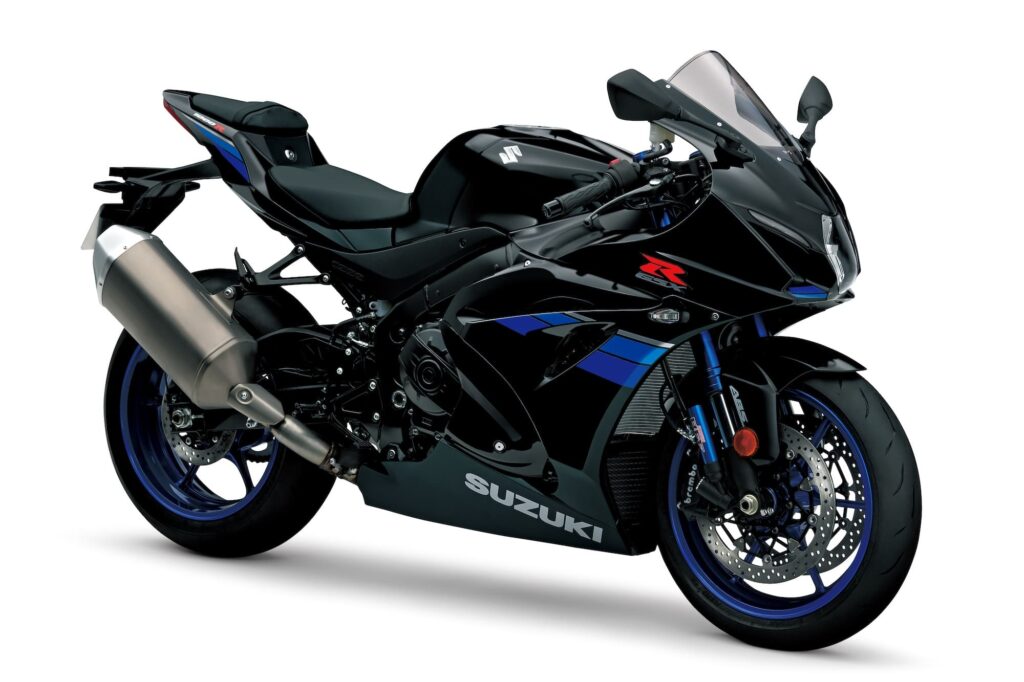
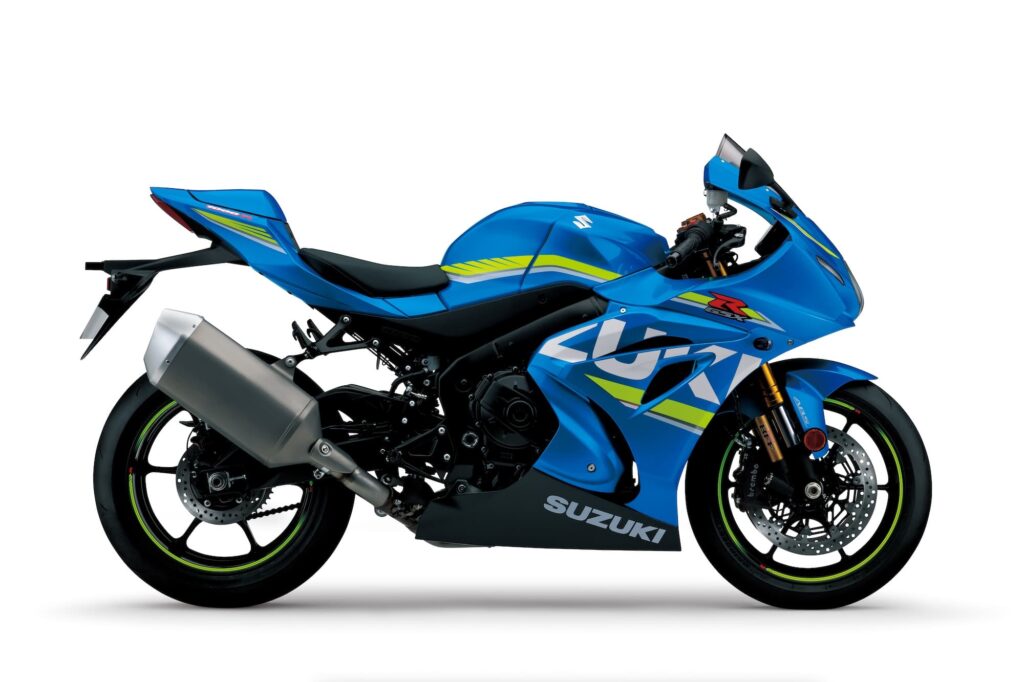
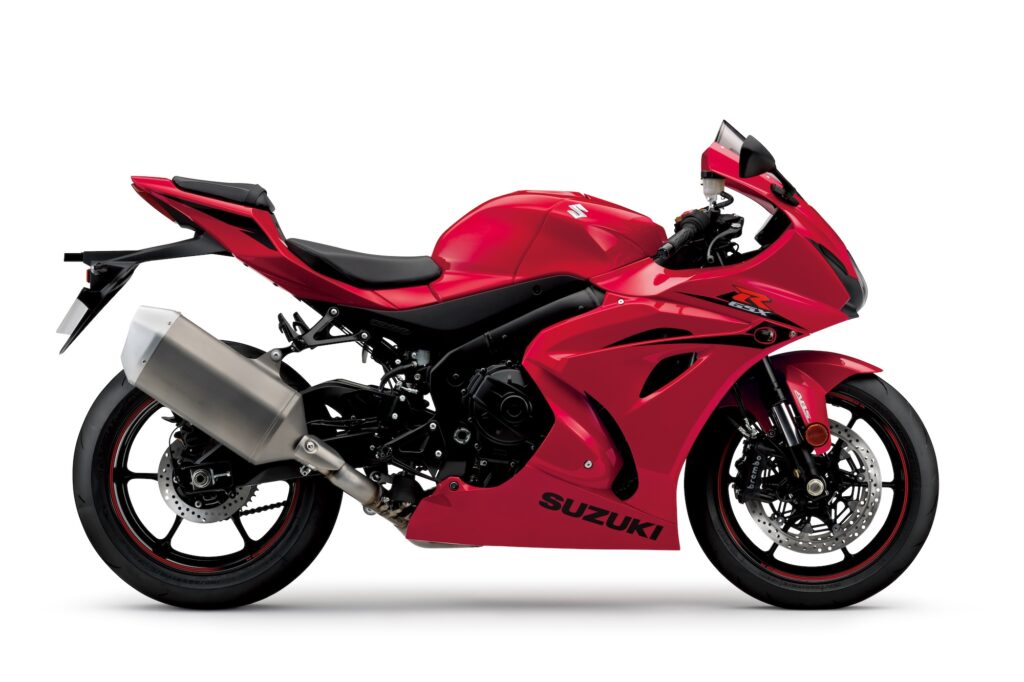
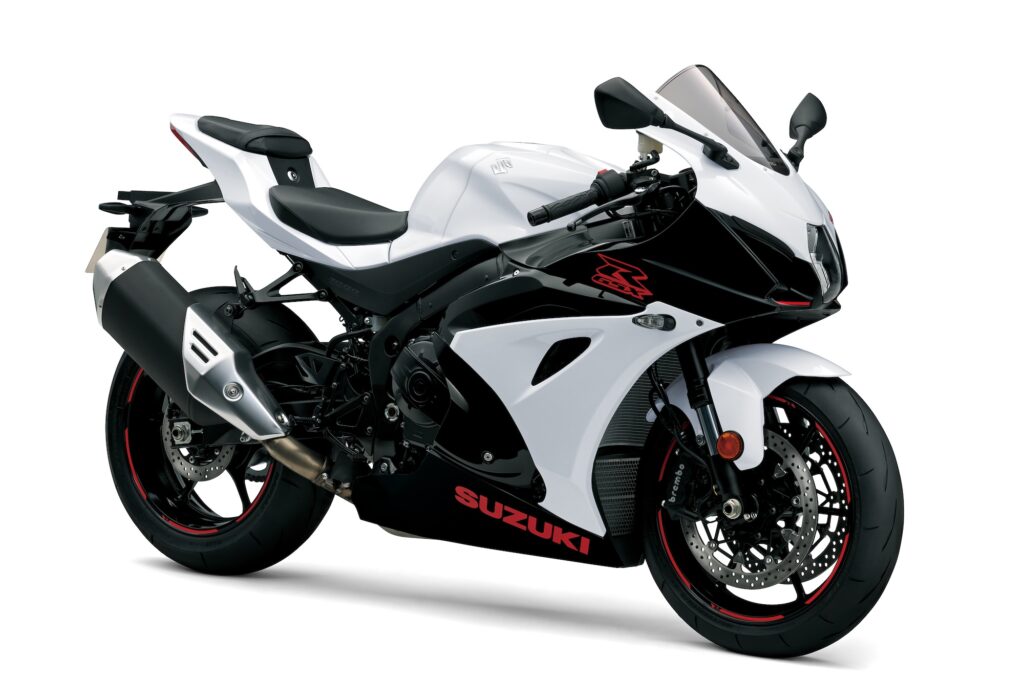
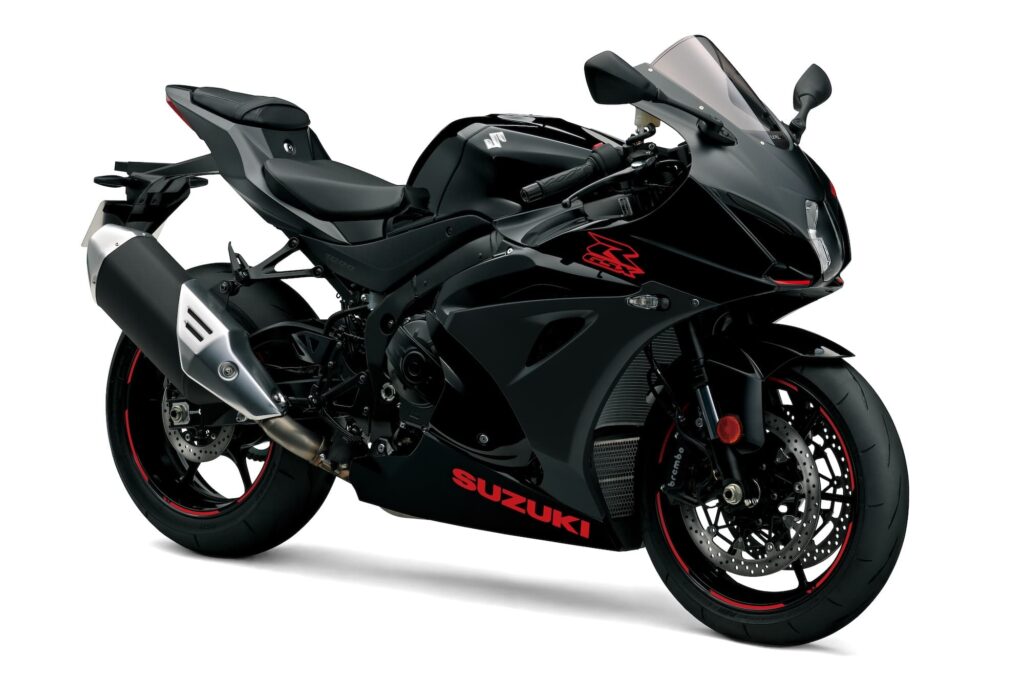

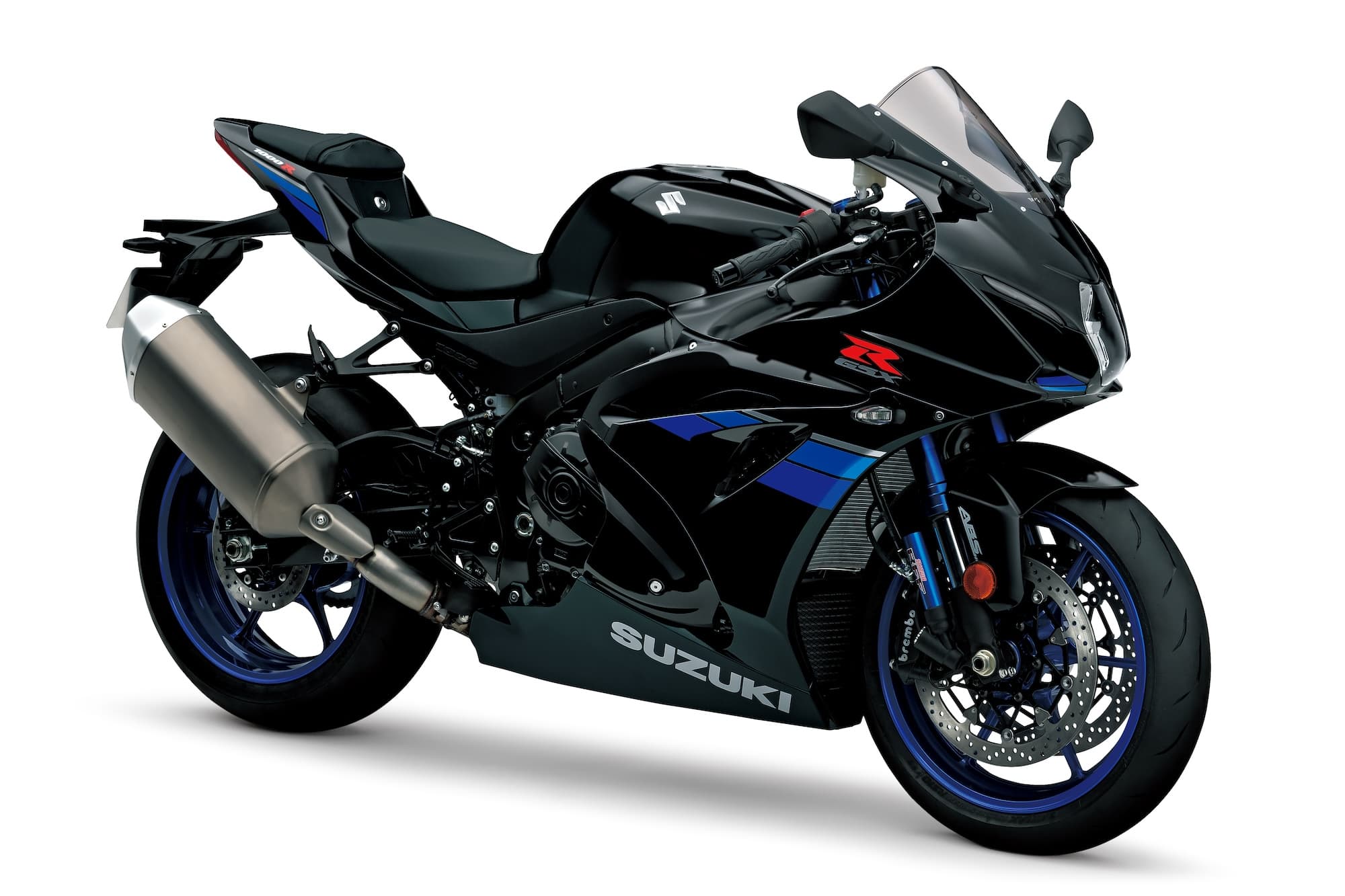
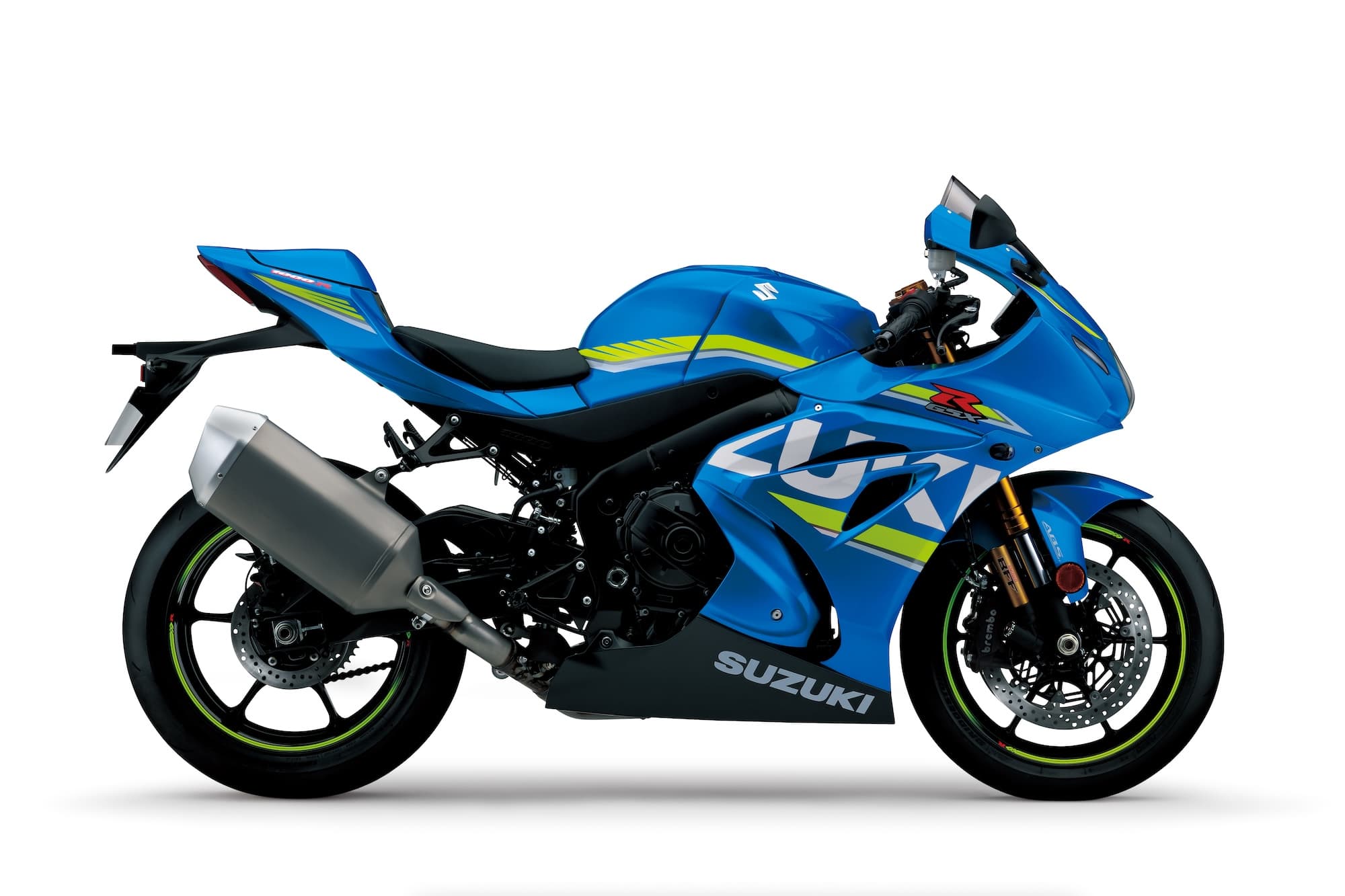
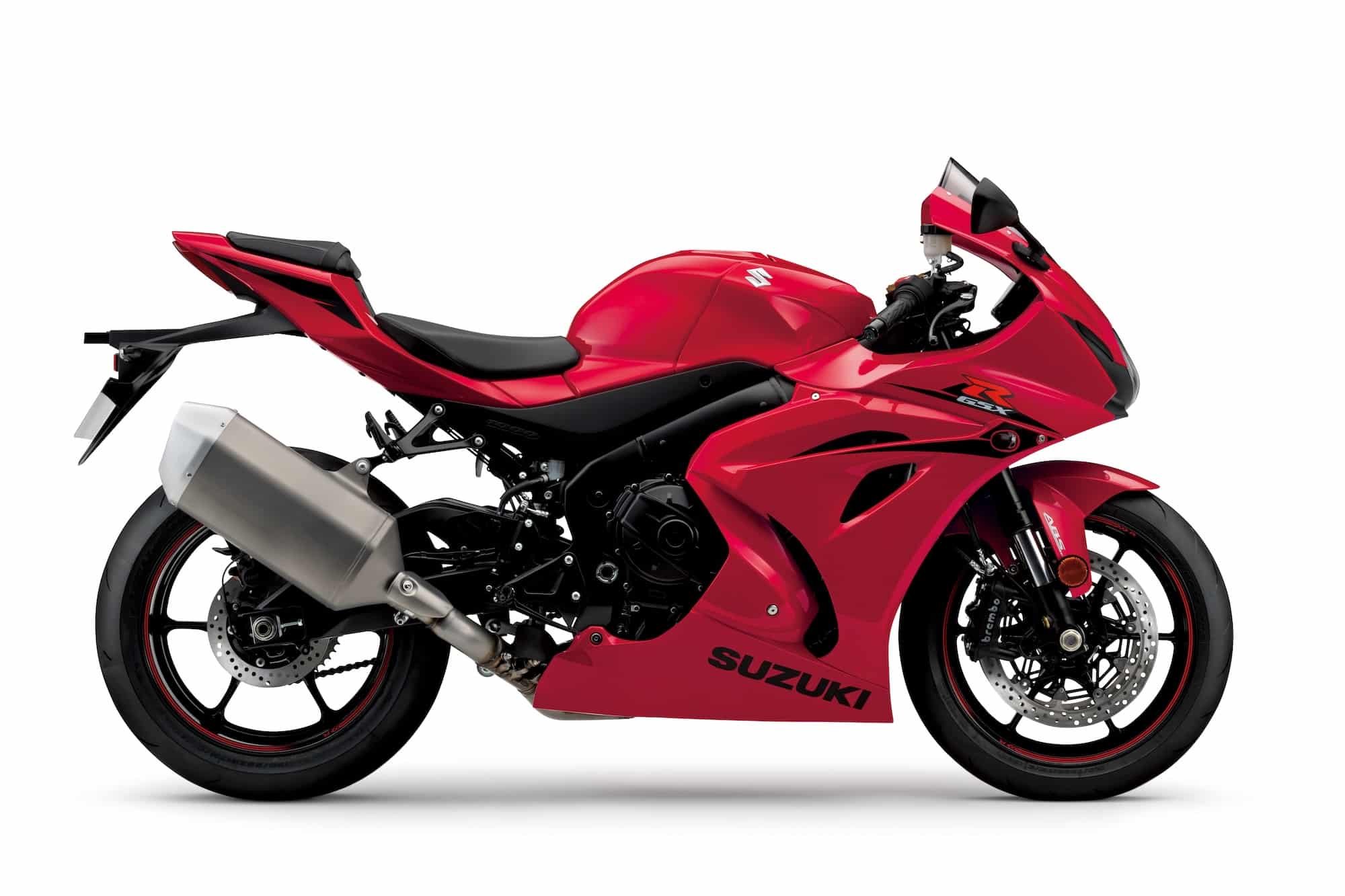

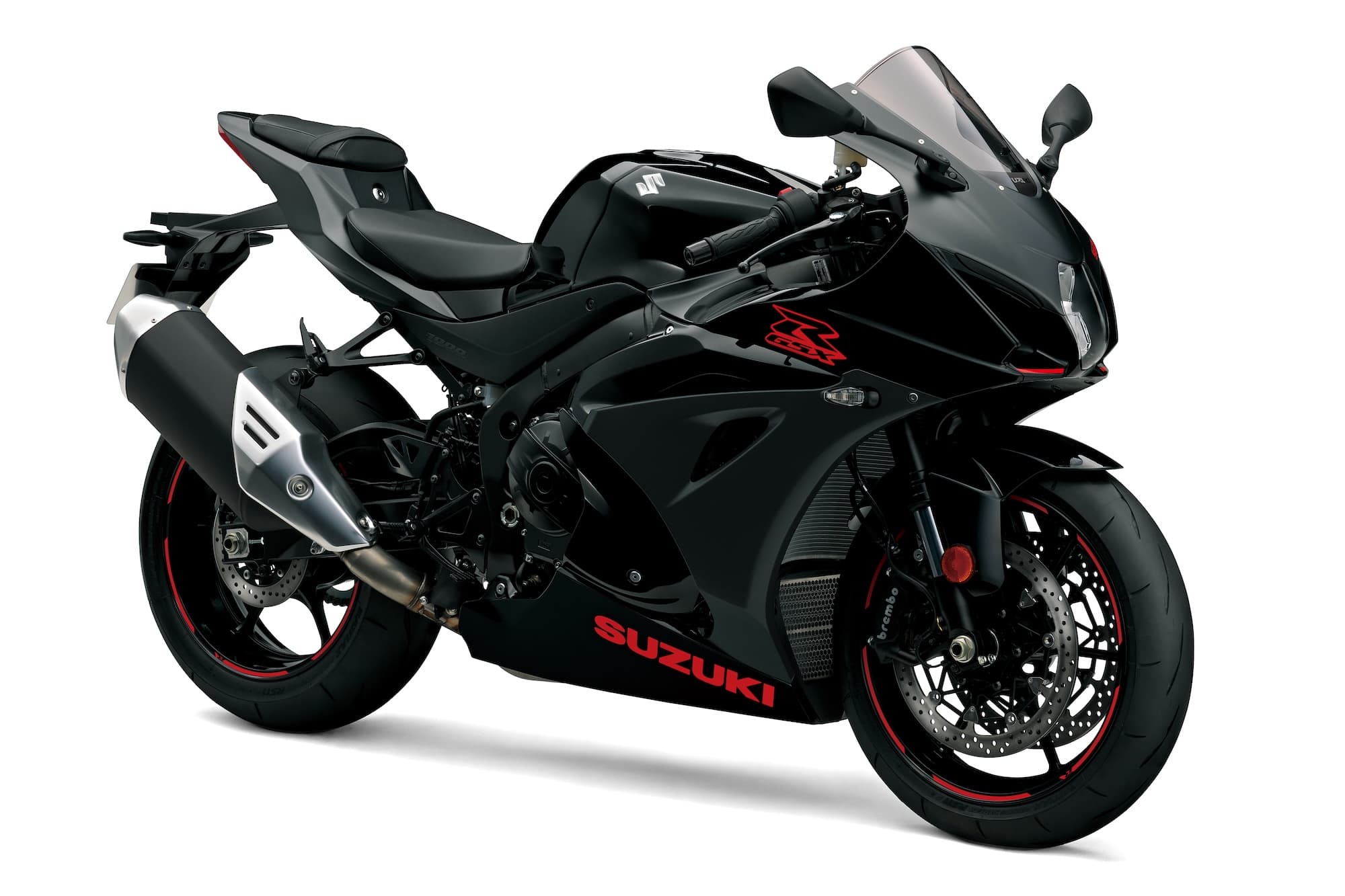
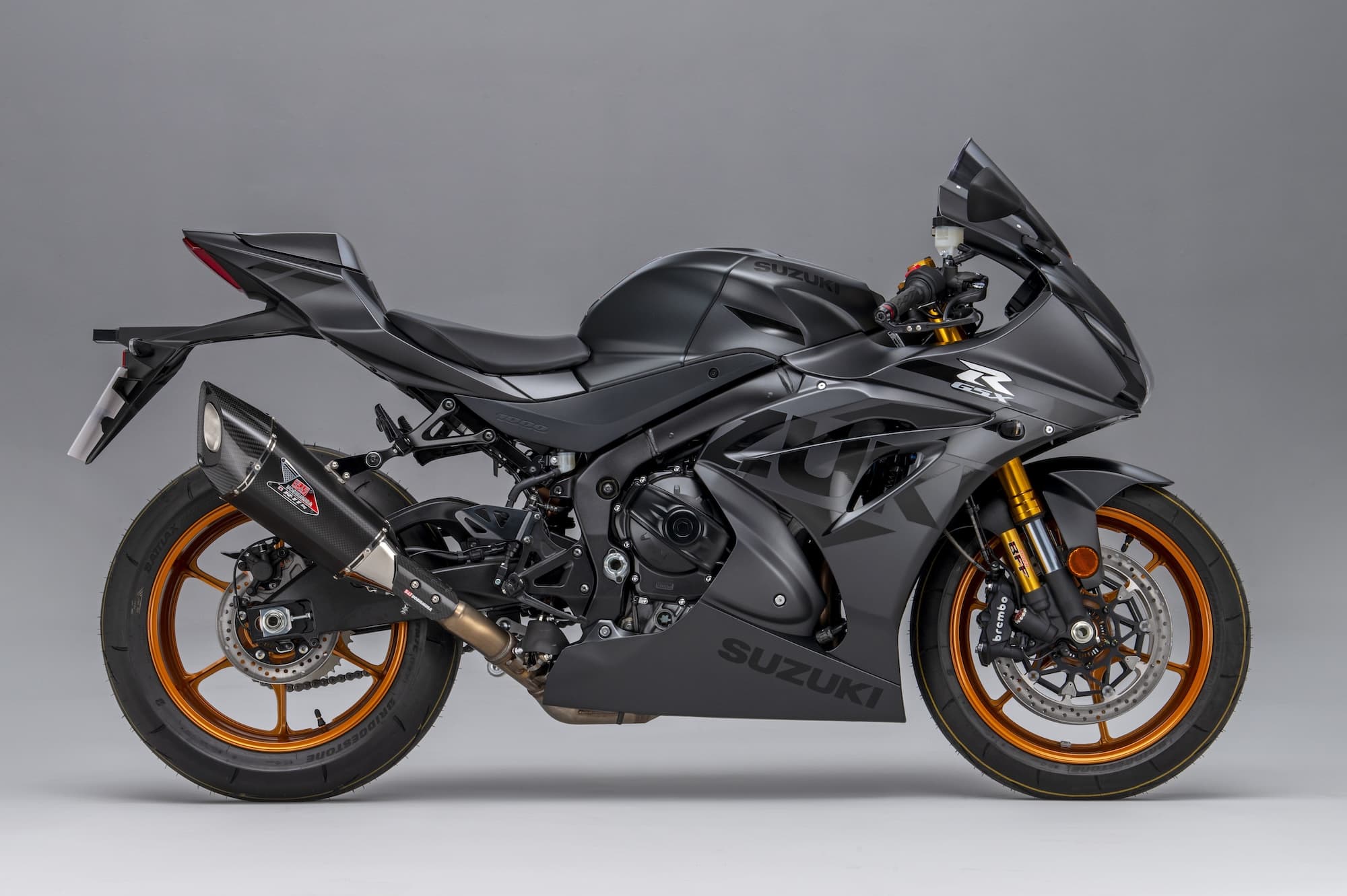
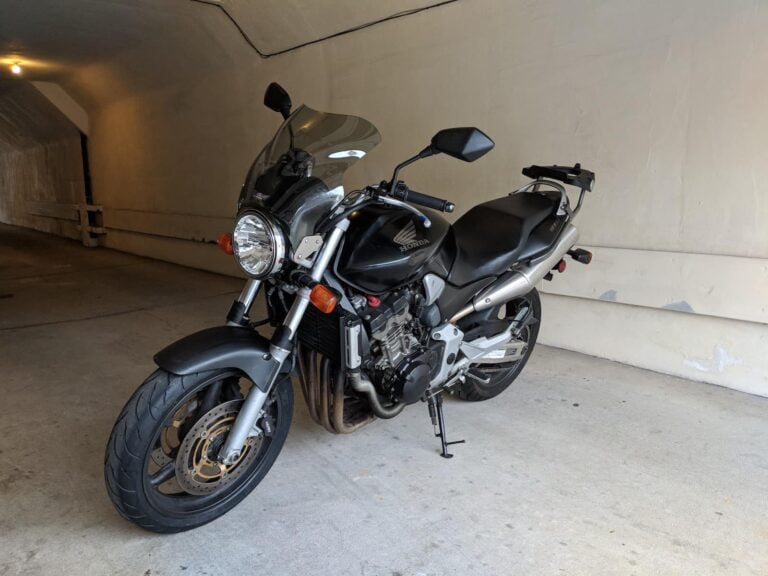
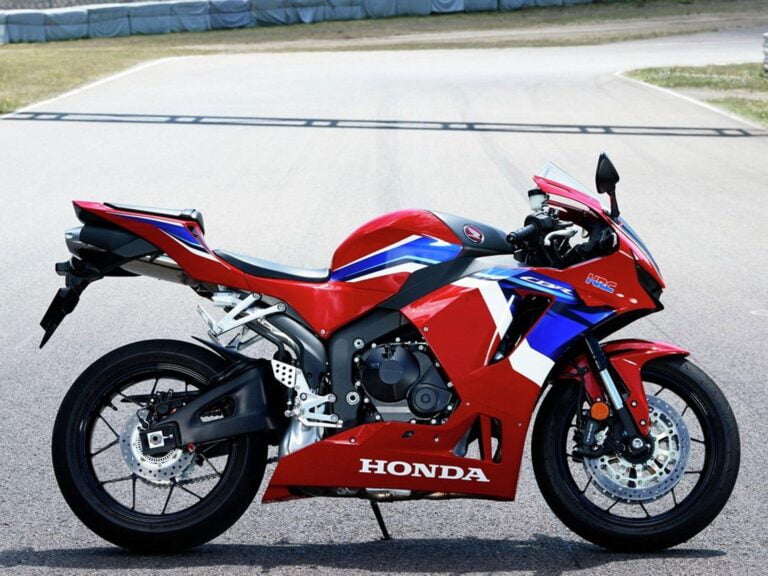
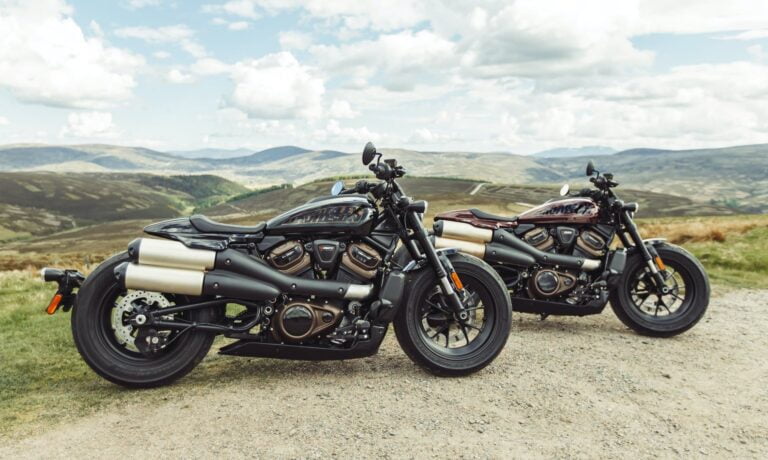
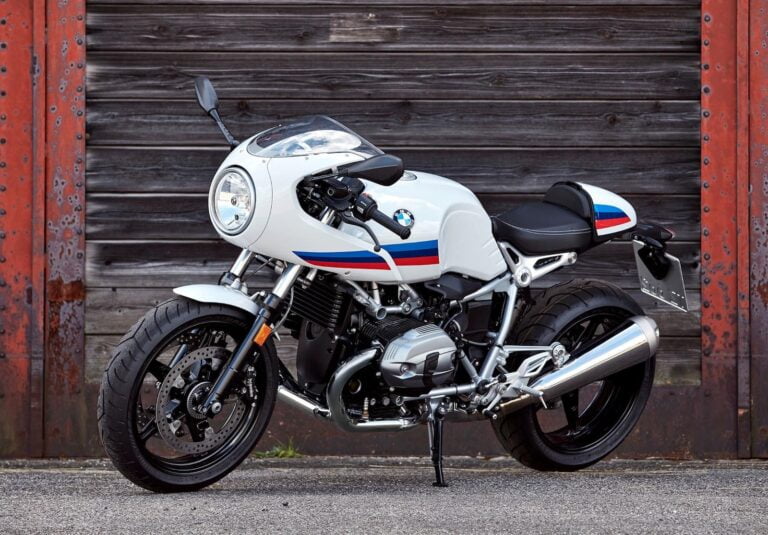
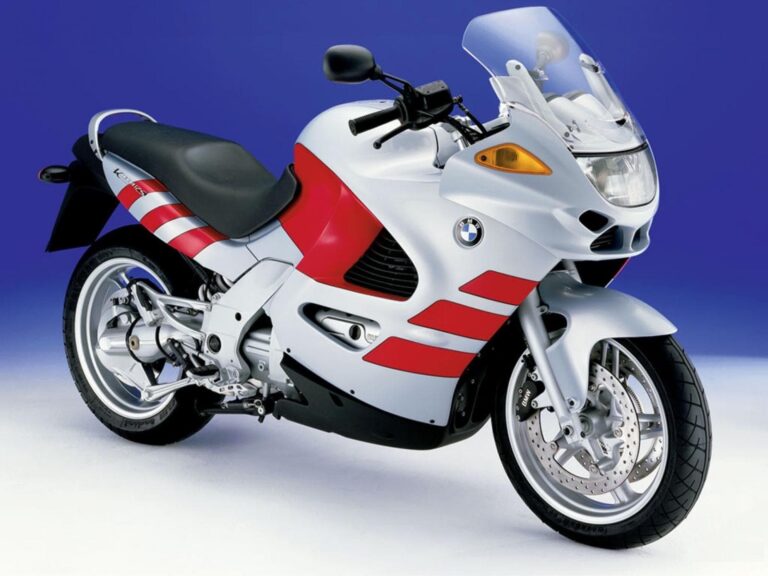
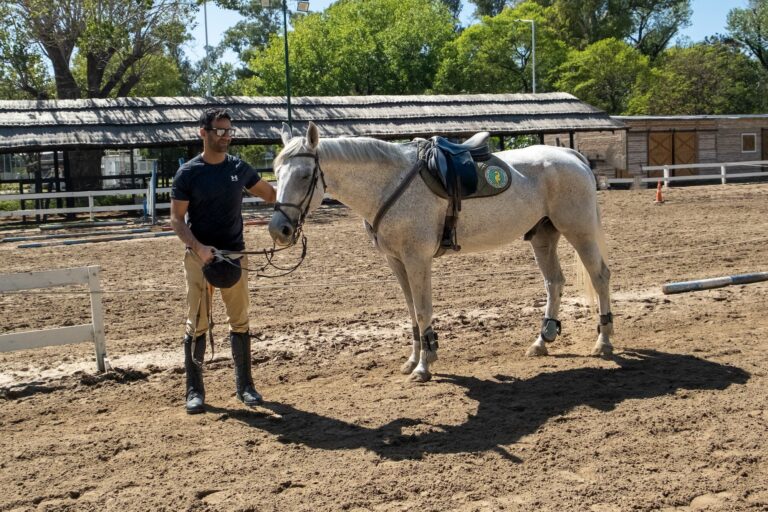
I started my street riding in 1986 on a gsxr le I wanted 1100 by 1987 I had one since then I’ve been Wes Cooley Racing school and I’ve rode and owned every gsxr since with more modified than sold to public
Zx-10r = 2024 ABS $18799…???
Succinctly put. Yes, I forgot the ZX-10R, great point. Added it in.
I ride a 2019 gsxr1000r every day. I have toured around Australia on it and it is my main source of transportation. I don’t have an issue with the riding position or the power curve. I am over 40 and still love it and find it perfectly comfortable and easy to ride even on the atrocious Australian roads.
Wow! I’d love to hear more of your story — will send you an email.
“My first open class bike was a 1983 Suzuki GS1100, then a 1984 Yamaha FJ1100 street fighter with 127 rwh. For everyday riding, most of my bikes were mid-sized. I’m 6’1” and 210 lbs; a lot of bikes don’t fit me, so big bikes it is. Just last year, I built an XR1200 Harley cafe bike and picked up a 2003 Yamaha R1 with an extended swing arm. Doing the stripped-down street fighter once more. At 62 years old, I just can’t get away from the big bikes. Love the mid and top-end hit of power. Be safe, ride well. Geist Wulf Cycle Werks.
I started off my motorcycle days like most with a small dirt bike, 1980 Kawasaki KD80M. My first street bike was the legendary 1986 Suzuki GSX-R750, bought brand new at age 19 in 1986. Boy, truly wish that I would have hung onto it, it’s a classic legend now, be worth lots of money. After having it for one year with some close calls, decided SuperSports weren’t for me, so I sold it. Never made it to a liter bike, good thing, way too much high-end power for me. Nice review of one of the best liter SuperSports still available today. Dana, you cleared up the differences between the base GSX-R1000 and the R model, one thing that I always wondered what distinguished them apart. Thanks!